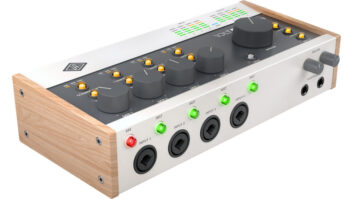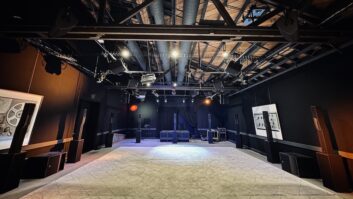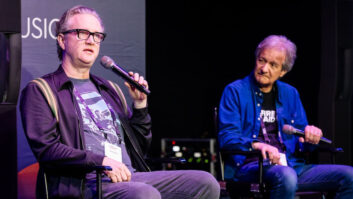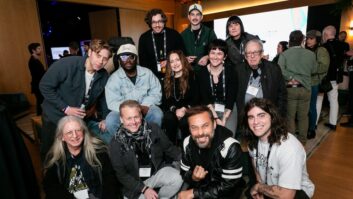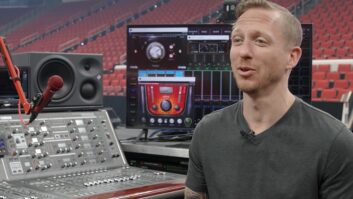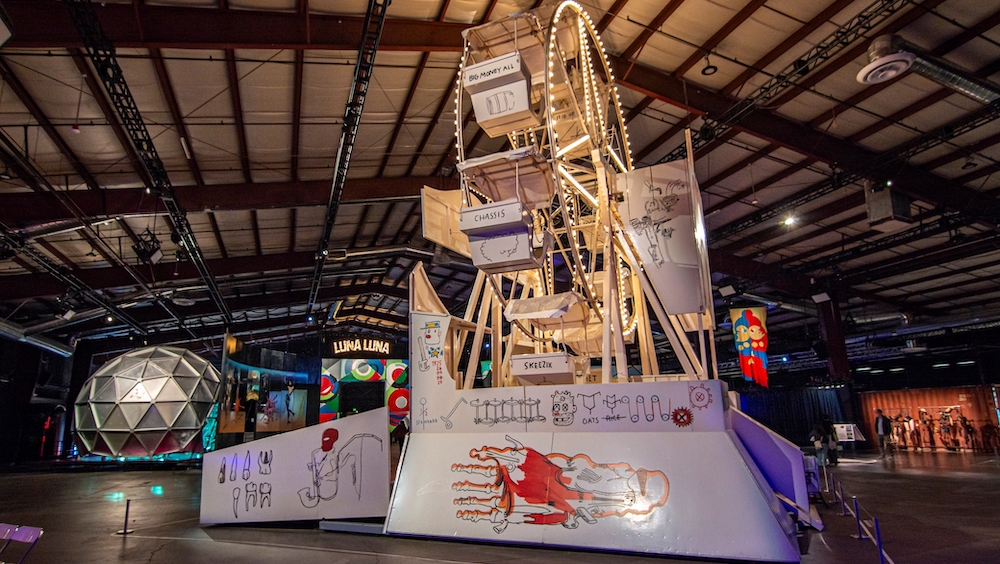
Port Perry, ON, Canada (June 3, 2024)—The team behind the revived Luna Luna art amusement park, including members of Drake’s DreamCrew, turned to Adamson to power the installation’s audio experience.
Luna Luna, Forgotten Fantasy, was the brainchild of Viennese artist André Heller, who conceptualized an art amusement park and opened it in Hamburg, Germany in 1987. This unique park featured rides and attractions designed by contemporary artists like Jean-Michel Basquiat and Salvador Dalí. However, the park eventually fell into obscurity and reviving it eluded Heller for decades, despite his efforts. That is, until a series of individuals, including hip-hop artist Drake, helped bring back the long-lost project. Recently hosted in Los Angeles, the organization plans to take the experience on the road.
According to Anthony Gonzales, CEO of Luna Luna, and COO of DreamCrew, Drake’s media team, “The team is knowledgeable, flexible and understood the nuances of the need for our exhibition. The number of guests who comment on the audio experience we’ve delivered is tremendous.”
The goal was to create a carnival atmosphere to bring the forgotten artworks and carnival rides, including restored audio and video, back to life. Head of audio, Demetrius Moore, Drake’s long-time FOH engineer, turned to Adamson to provide a comprehensive and flexible audio system to cover multiple zones and sources in the 60,000-square-foot space.
The setup consisted of 18 CS10p, 11 CS7p and seven CS119 intelligent loudspeakers. An additional eight IS5c and five PC5 passive fills were used for smaller, discreet locations, powered by Lab Gruppen D-Series amplifiers. Signal distribution was handled by an RME AVB Tool converting MADI to AVB and a Gateway to convert AVB to AES3. All networking was handled by a single Luminex Gigacore 14R.
Adamson $4M Expansion Nearly Complete
Moore emphasized, “The versatility, especially with power distribution and the AVB networking in this current system, was crucial. Without those two things, it would’ve been a nightmare to run cable as the layout of the system is so unique, and there are speakers that are so far [apart] that being able to daisy-chain up to six speakers saved us a lot of time loading in and a lot of cable. Also, with this system being such a unique design, the AVB networking has been an amazing tool as we can send whatever signal we want to each speaker without having to change any hard patch; just jump into the software.”
Audio matrixing was handled by a DiGiCo SD11 feeding an RME AVB tool (up to 32 channels), which then fed MILAN audio to each zone of speakers. Levels were adjusted using the onboard DSP of each speaker, controlled wirelessly through Adamson’s ArrayIntelligence Software.
For some specific applications, IS-Series speakers were used (IS5c in the Dali Dome, Ferris wheel, and entrance), with MILAN audio sent through an Adamson Gateway for level control and output as AES3 to the Lab Gruppen D-Series amplifiers.


